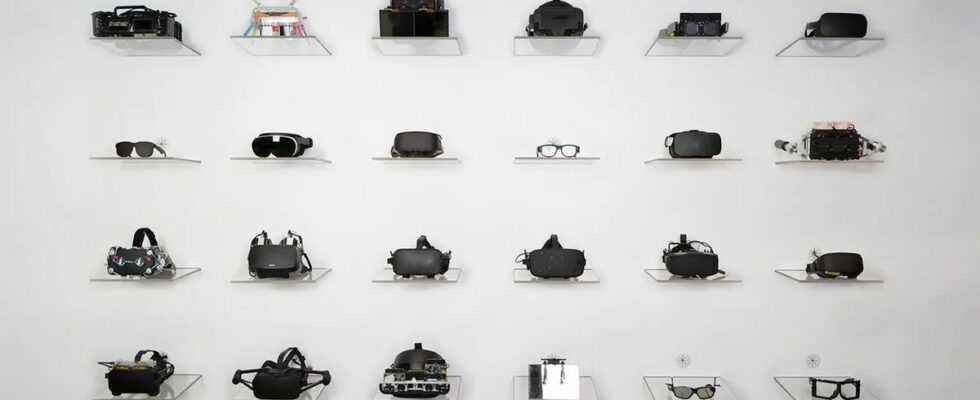Mark Zuckerberg throws himself body and soul into virtual and augmented reality. The boss of Facebook, and its parent company Meta, presented on Monday June 20 a collection of VR / AR headsets under development in the company. Don’t imagine getting your hands on just one of these gadgets right away, all of them are prototypes that Meta relies on to create the ultimate gateway to the Metaverse.
Meta has been secretly working on mixed reality headsets for weeks, if not months, that can both immerse us in the metaverse and display information about the world around us. The Cambria project, which the company mentioned at the end of 2021, was one of the first bricks of this new world wanted by the boss of Facebook. We now know more about the different priorities of Meta in the field.
The different prototypes presented by the company each focus on a specific aspect of the mixed reality experience. In all, Facebook would have no less than 24 different products in its labs and would seek to solve four technological challenges:
- The first is that of the resolution. To really immerse us in virtual reality, the screens of these helmets must display a sufficient quantity of pixels for the experience to be pleasant. A prototype helmet called “Butterscotch” focuses right on that and “makes it easy to read the very last line of an eye exam“, promises Mark Zuckerberg. At 1832 x 1920 pixels per eye, the result looks interesting, but to achieve such density, Facebook had to considerably reduce the field of vision, which points to 55° (compared to 110° on the Meta Quest 2).
- The prototype nicknamed Half Dome focuses on the question of focal distance. Virtual reality requires being able to focus on objects very “close” as well as very far from the eyes. For this, Meta uses gaze tracking mechanisms as well as a technology called Varifocal which allows you to switch between at least 64 different focus points.
- Then comes the problem of distortion. The lenses currently integrated into VR headsets focus the light differently depending on whether it passes through the center or to the side. This can create optical problems such as blurring or chromatic aberrations. No secret here, the effect being purely physical – since due to the shape of the lenses – the best tactic to correct it is software. According to Mark Zuckerberg, Meta is working on a solution that would make the distortion “imperceptible to the human eye“.
- Finally, the last concern that Meta wants to address is that of the HDR. To reproduce as closely as possible the light range perceptible to the human eye, Meta has built a helmet (the Starburst) capable of climbing to 20,000 nits of brightness. For comparison, the Quest 2 runs around 100 nits. That said, this feat requires the presence of a bulky lighting system that requires two fans and two handles on the helmet, otherwise it would be impossible to use. Suffice to say that the Starburst is very, very far from being a finished product.
You will have to be patient
Each of the prototypes presented by Meta therefore attempts to solve one of the four major problems identified by the company in the use of virtual and augmented reality. None yet manages to combine all the technologies to make Mark Zuckerberg’s dream a reality. There is a project called Mirror Lake that is supposed to offer excellent resolution, perfect distortion correction, focal length adaptation and wide dynamic range, but the headset is purely theoretical for the moment.
A final prototype dubbed Holocake focuses on compactness. It is usable according to Mark Zuckerberg, but does not really benefit from the advances made on other helmets. Ultimately, the idea would be to integrate each technology into this discreet looking helmet. “Screens to fully replicate the full capacity of human vision will unlock some really important things“, affirmed Zuckerberg. For the moment, one remains far from the account.
